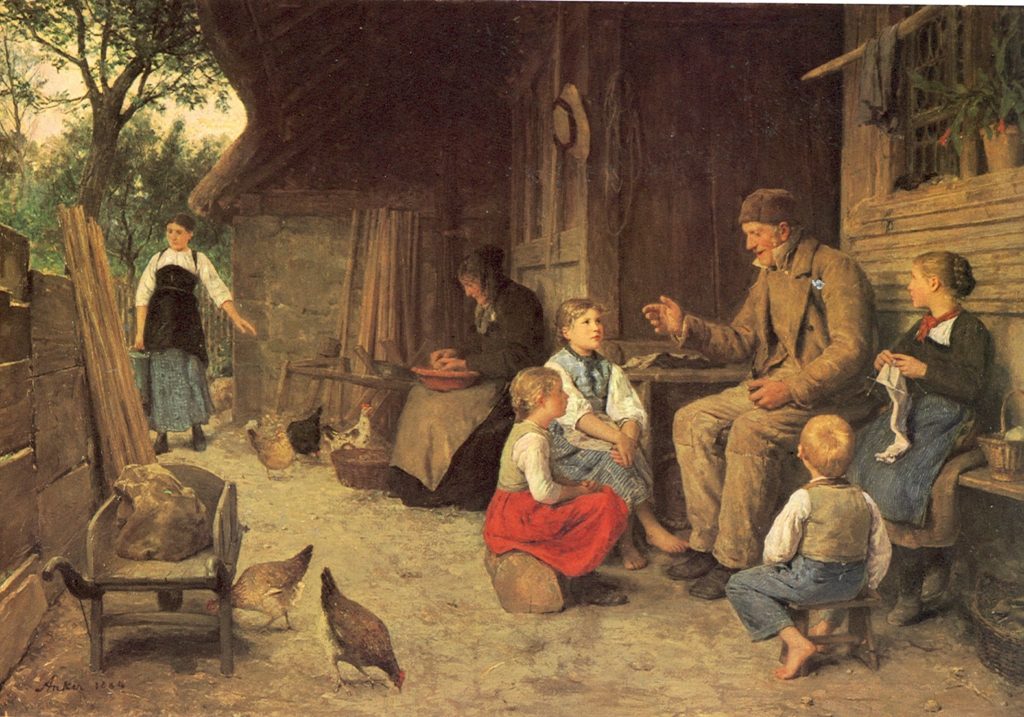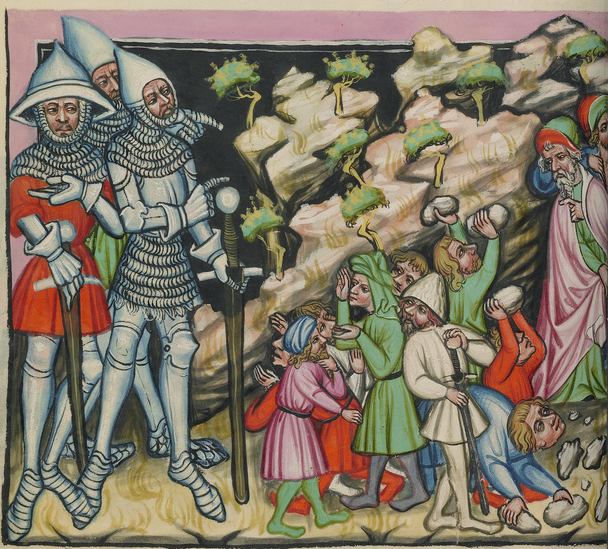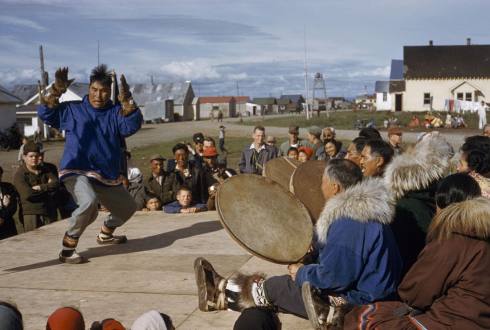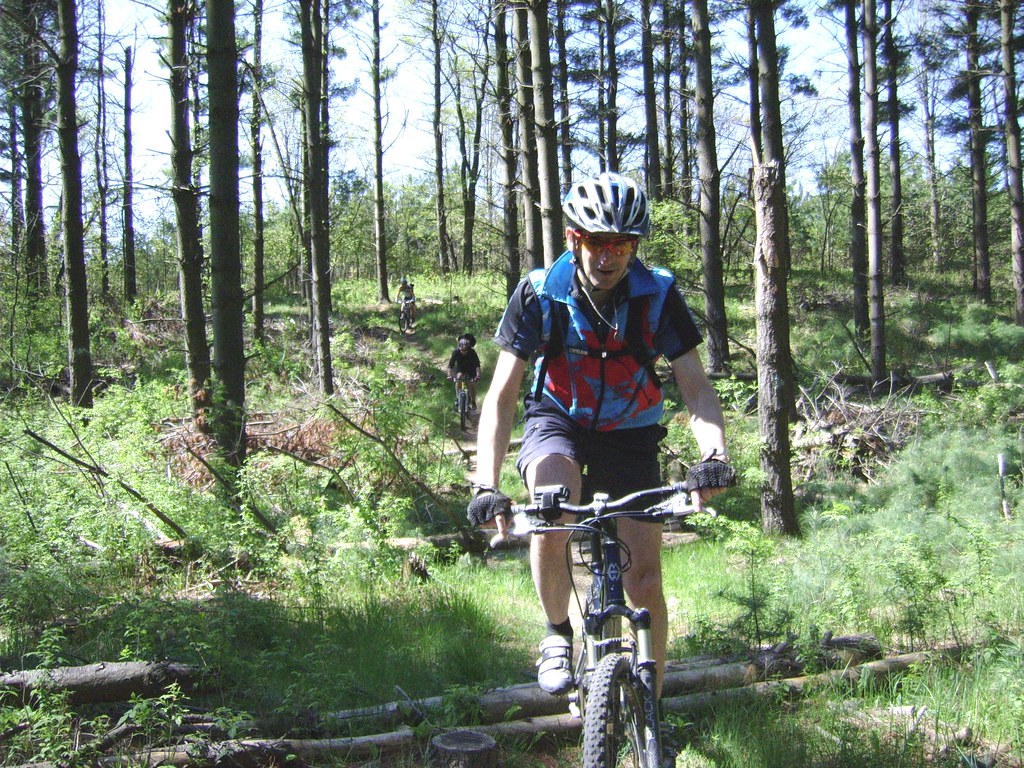I was born into a family of storytellers. My father was a quiet man, but when he opened up and launched into a story involving something in his life, he could talk for a half-hour uninterrupted. My older brothers have shown the same talent for recounting an incident at length. I have a tendency to do the same, but I prefer my medium to be the written word and I like most to make stuff up. My grandmother Gertrude wrote a book of poetry titled Her Book of Memories. I would love to have heard the yarns of my line of grandparents back to England. Perhaps something in my DNA is wired into my penchant for storytelling.

Show and Tell
I respect the raw telling of a story by voice and memory. That’s how it was done in the beginning. Eventually, stories were written down and then printed on a press. Obviously, many classic stories have been told in writing, but I’m thinking here of storytelling in the verbal tradition. I can imagine human beings were telling about the events of the day as soon as speech was developed enough to do so. “You should have seen that sabre-tooth tiger, woman! I had him on my spear, but he bit it off and ran away.”
By the Middle Ages, storytelling was a major form of entertainment. There were professional storytellers, many of whom were in great demand. They worked for anyone who could afford their services, whether it was an individual such as a nobleman or a village that pitched in the money. It wasn’t only entertainment. Often, there was educational or historical value in the stories that were related, passing down information that was like something you might find at a local historical society today.

Here’s an example of a summarized tale that was told in numerous countries, handed down from generation to generation. I’ve pulled an excerpt from a website called The History Press, an article written by David Tonge called Medieval Tales from Many Lands. “Stories like the one about a foolish man who goes to a doctor in the hope of getting a medicine that will help him find his lost donkey. The doctor duly prescribes the fool a potion that makes him fart so loudly and so long that it sounds like a donkey braying and so attracts his own beast! It is a story that made many a medieval person laugh long, loud and lustily long ago and it still has the power to amuse today, especially children who love fart jokes when many a grown up does not.”
Storytelling Today
There has been a resurgence in the popularity of storytelling in recent years. I’ve done a little at an open mic I attend sometimes. Primarily, it’s a music night, but various art forms are encouraged and storytelling is among those.
Maybe I’ll tell one like this at the open mic in the not too distant future. There’s not enough room to tell the whole story here, but I’ll give you a taste. In 2004, a good friend of mine and I took a road trip into Colorado. We went deep into the San Juan Range of the Rockies, then started back toward home by going along the western slope. We visited Ouray, a picturesque little town at an elevation of about 7800 feet. We headed south and found the road was full of hairpin turns. The worst part, though, was the fact that the outer lanes of the road had a shoulder no wider than a foot with no guard rails for long stretches. There was a precipitous drop of about a 1000 feet throughout. No trees or anything else to break a fall. My friend pointed out how easy it would be to go over the edge. I was driving and that sent me into a state of near-panic. I became hyper-aware of the potential for a horrible, violent death. I began shaking, even to the point of having one arm rise and fall radically. I envisioned myself succumbing to an urge to turn the wheel intentionally to the right and send us off the road and into the view. I really didn’t know if I was going to make it through this stretch of road.”
The story goes on, but I’ll leave it there. Good drama, right? This art can touch the entire spectrum of human emotion. The campfire horror story can make it hard to fall asleep. A stand-up comic is often an excellent storyteller. Louis CK is an outstanding example who can make us laugh and cringe simultaneously. Spalding Gray was an actor who helped revive storytelling with a one-man show back in the 1980s who explored darker emotions through his tales.
Getting Involved
There are plenty of opportunities out there to do some storytelling or listen to others. Meetup alone has 552 storytelling groups with over 318,000 members across many countries. The rise of Zoom and other teleconferencing apps has made it clear we can organize our own storytelling groups at no cost if we can just find a few people who would have an interest.
So, storytelling holds excellent promise for enjoyable entertainment, deep reflection and an art form to cultivate. Connect with some storytellers! Keep up the tradition.



